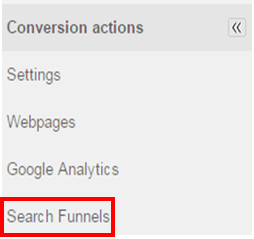by Laurie Sullivan@lauriesullivan, January 16, 2017

Search intent signals and data can help to improve triggers that deliver personalized email campaigns, with 45% of retailers saying they plan to roll out a strategy to better engage consumers based on specific behaviors and activities this year.
Retail TouchPoints and Magnetic in September 2016 surveyed 200 consumers in the U.S. and Canada, and more than 100 retail executives to analyze what the report calls “new rules and realities of email marketing.”
While the data affirms that email remains a discovery and shopping channel for consumers, the factors driving engagement and interactions with brands fall short. That’s because consumers are inundated with emails, the role of the email has changed, retailers are behind in implementing email technologies, and there is slow adoption of triggered emails.
The use of triggered emails can range from abandoned carts or sites, to price drops, low inventory, new arrivals, shopper alerts and back-in-stock items, according to the study “Inbox Love: Investigating the State of Triggered Emails & Personalization for Retailers and Consumers.”
The survey also identifies another opportunity.
The trend of reading emails on smartphones, yet making a purchase from a desktop, creates a time lapse or gap that retailers can use to their advantage through triggered emails. Sometimes, a search or click on a link is involved. It’s important to remember that email can drive a conversion or a purchase.
While 94% of consumers open and read emails on their smartphones, 71% prefer to use their desktops for purchase. Only 3% will use a smartphone to purchase items.
External signals, like search intent that help marketers decide when and how to communicate with consumers, have become one of the biggest innovations in email marketing, said James Green, CEO at Magnetic.
Imagine having a customer that begins searching on engines like Google and Bing for products sold through the retailer. They search on engines, but never visit the retailer’s Web site.
“Mostly this behavior goes completely unnoticed and unknown to retailers, but equally clearly, this is a perfect time to send an e-mail,” Green explains, suggesting retailers can use search intent signals to trigger emails
The study suggests that brands and retailers can close the timeline between reading an email on a smartphone and visiting the retailer’s Web site. While 48% of retailers participating in the survey send triggered emails based on specific data points, it is still a relatively new tactic for them.
Only 34% of this group said they have been sending reactive, triggered emails for two years or more, and 18% said they have used it between one and two years. Some 22% of retailers say they don’t send any type of triggered emails.
“New arrival” ranked as the second-highest performing trigger by retailers, with 25% of survey respondents calling it “very effective.”
Retailers using triggered emails report 56% click-through rates, 50% open rates, 44% on-site conversions, and 44% purchase completions.
MediaPost.com: Search Marketing Daily
(28)








